Bose 901 Series VI Speakers Review

In audiophile circles Bose is usually a punch line to a joke, or even seen as the great corporate evil of audio.
Bose is known only using paper cone drivers pushed into unusually small boxes, never publishing frequency response specs, and suing Consumer Reports for giving them a bad review.
Even though paper is a good material to use for speaker drivers, and plenty of audiophile companies don't publish specs, the perception is that Bose is overpriced junk.
Truth is a little different, Amar Bose was definitely not an evil man, instead one of the world's great philanthropists, and his company pushed the boundaries of audio more that most people realize. If you have a satellite speakers or a subwoofer, you can thank Bose for popularizing that form factor. If you enjoy a high quality factory car stereo, you can thank Bose for that as well. They were installing EQ'ed Class D active speaker modules in the doors of Cadillac's back in 1984. Bose was doing research using Dummy heads and figuring out head related transfer functions in the 70's that laid the ground work for headphone and VR breakthroughs that are happening now. As for the argument that their gear is overpriced, I've heard much worse for much more. Profits from Bose smart manufacturing, not corner cutting, has funded research that shaped much of today's the audio landscape.
All of that said, in general, Bose products do sound like shit.
Design Overview:
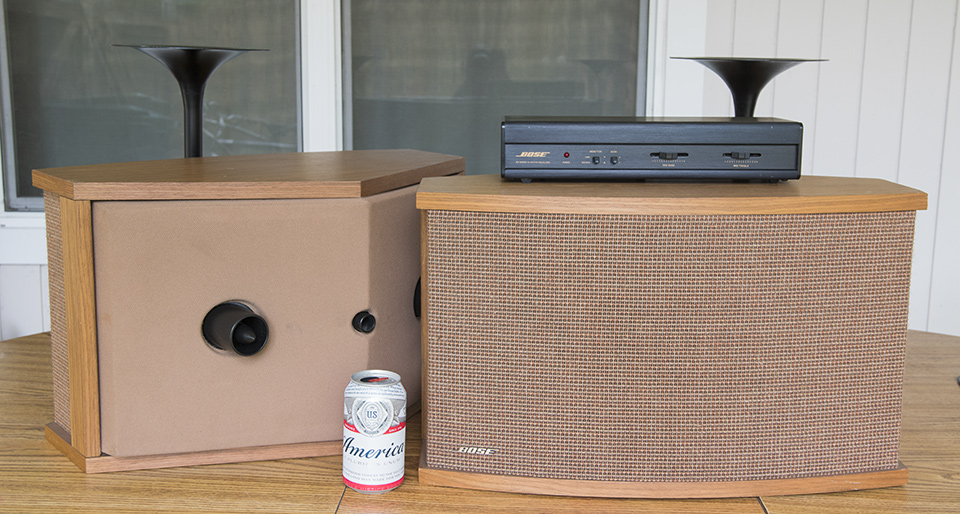
One full range driver in the front, 8 on the back, 4 port tubes, and an active EQ box to make it sound reasonable. This is the speaker that back in 1968 proved commercial viability of omnidirectional, dipole, and all sorts of bizarre dispersion patterns.
Even today you can see some of these same ideas being used in new products such as Audio Kinesis "Late Ceiling Splash" technology, where very directional speakers are coupled with delayed reflections that add emersion to the listening experience.
The pair of speaker I have for review are the most recent iteration of the 901 design, the Series VI. This pair was made back in 1987 when Bose speakers were still made in America. The design has not changed since then, and honestly it's almost longer in the tooth than Klipsch Heritage speakers.
Component Overview:
Driver
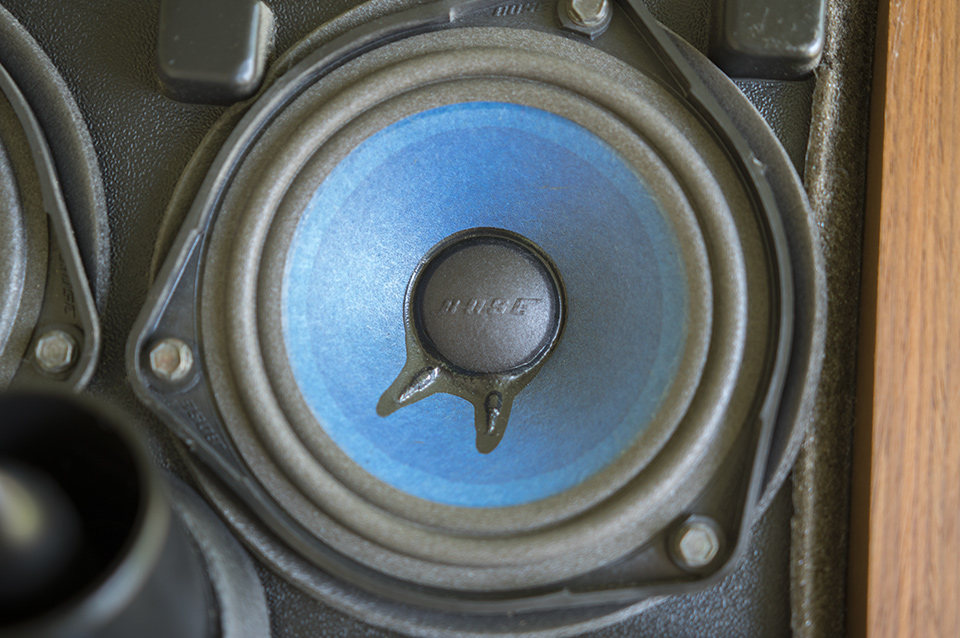
Blue cones with that famous for failing foam surround. The drivers also have the ugly looking tinsel leads on the front, but on the plus side the plastic baskets are branded three times along with the dust cap. These drivers are 1 ohm each, and are ganged up in such a way internally to produce an 8ohm load.
Grills
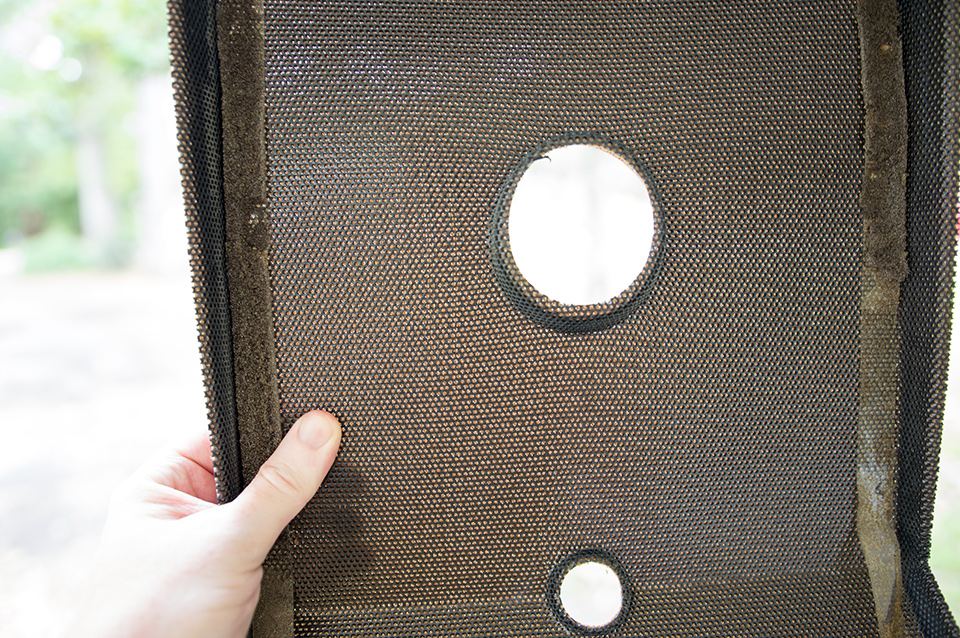
The front grills are tweed and attached with a handful of tiny staples that are only possible to find with a magnet, so they stayed on for this review. The rear grills are a molded metal mesh and the clip to cover the back drivers. The rear grill also works to cut the treble response from the rear drivers. If you try running these speakers without the rear grills expect shrillness on a scale that should not exist in the natural world.
Ports
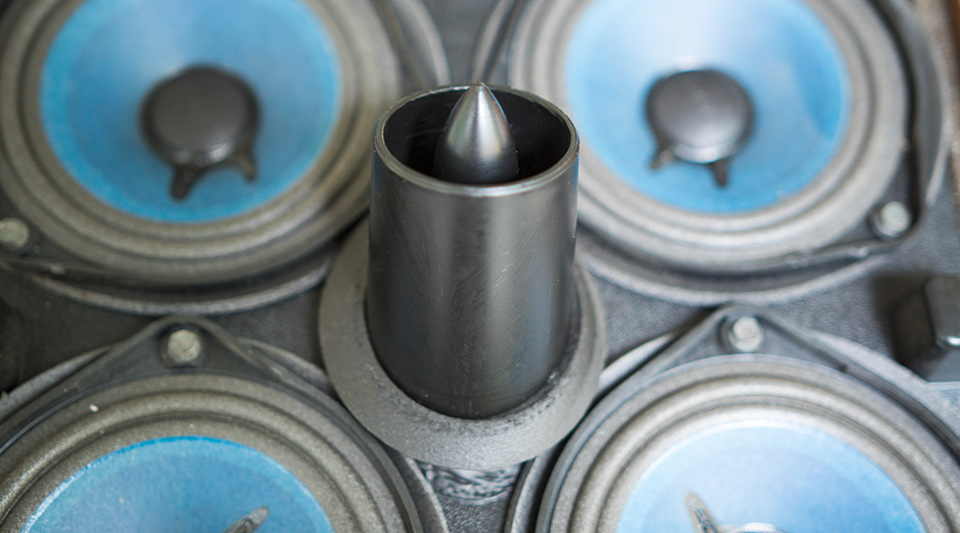
A two piece port, one side exits on the front of the speaker hidden behind the tweed grill, the other blasts air out of the rear of the speaker. The port tube design is something I've never seen duplicated, it makes for a very deep tuning without much physical volume. The downside is that these ports can put a candle out from 6 feet away and are audible at full chuff.
Cabinet
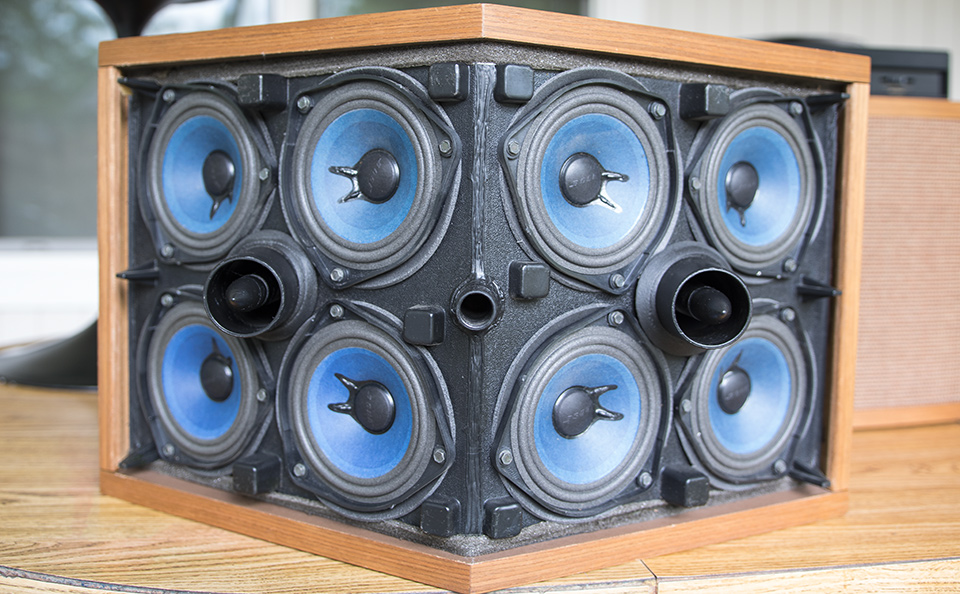
The cabinet is made of what looks like veneered MDF for the top and bottom, the rear of the speaker is a thick injection molded plastic. It's a pretty stout box if you account for all of the holes in it.
Terminals
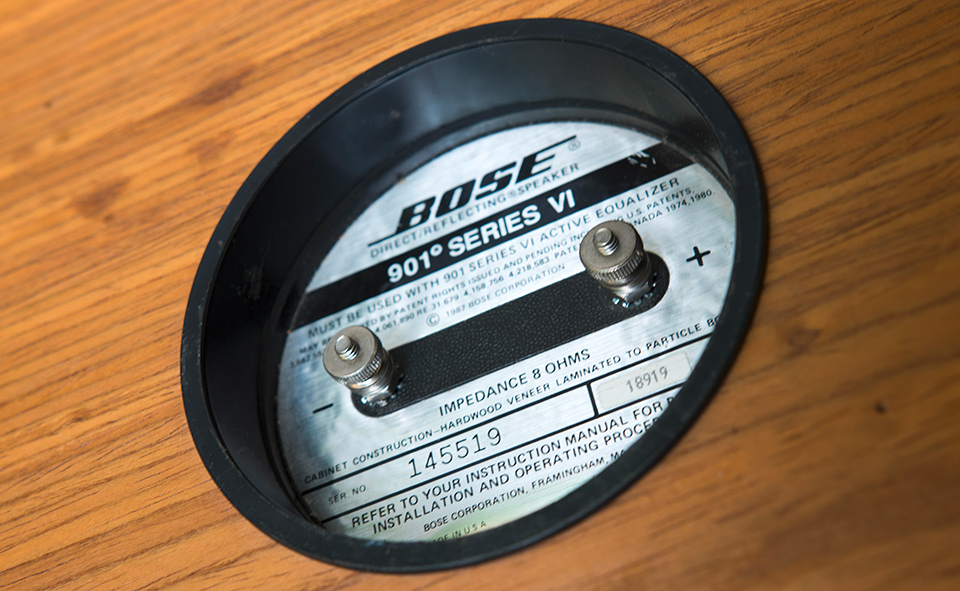
Awkward is an understatement, these terminals are in the middle of the bottom of the speaker. The idea is that you hook up your wire and thread it through the speaker stands. Then, unless you want to put wood screws into your speakers to attach the stands, you are in for a chore. The dance of flipping the speaker while trying to hold the stand onto the bottom is a contortion that only the 901 owners can understand.
Stands
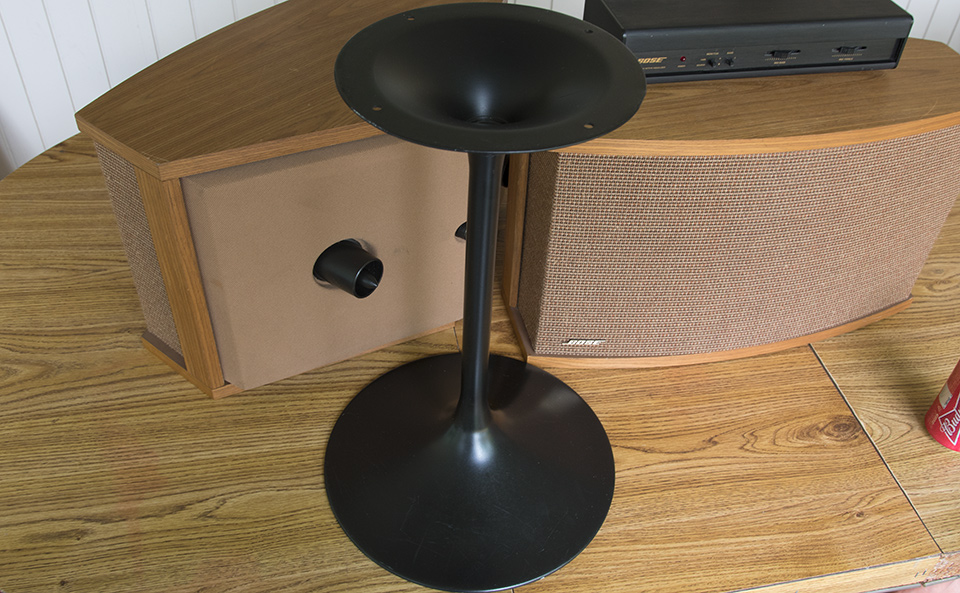
Here are the stands mentioned above. This iconic design is really beautiful, if not the most functional. The wire is supposed to run through the top and out of the bottom, but there is no notch for it to slide under on the bottom. Instead the wire just kind of get smashed and the stand becomes slightly unbalanced.
Equalizer
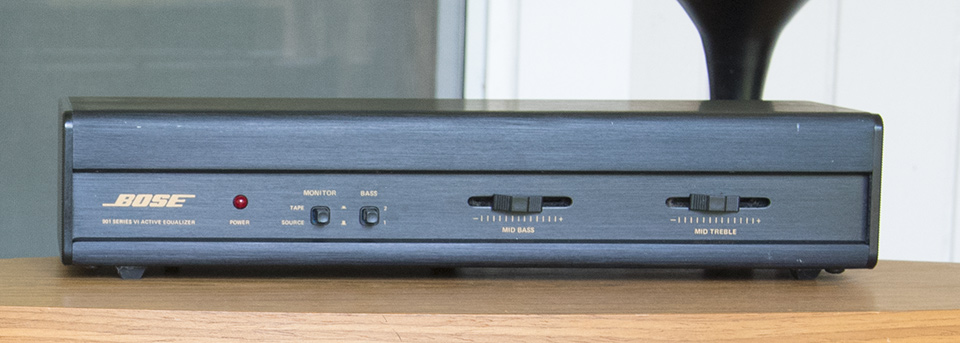
No crossover in this speaker, instead we have a required active EQ that shapes the sound before it goes to the amplifier. There are two settings for Bass contour, and a mid treble / mid bass sliders.
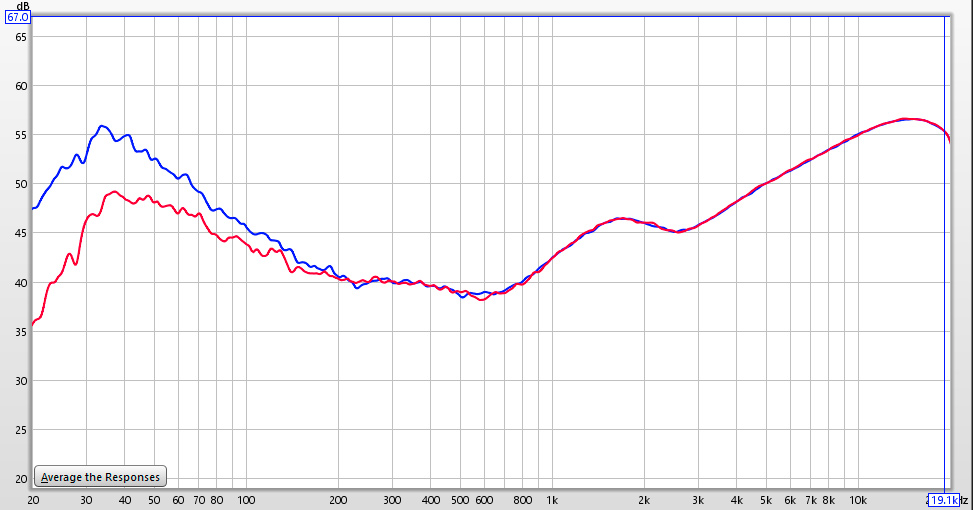
This shows the default EQ used to correct the speakers. The blue line is for the default Bass EQ, the red line is for the secondary bass setting. Yes, that is a shit ton of treble boost, as well as a healthy chunk of bass boost.
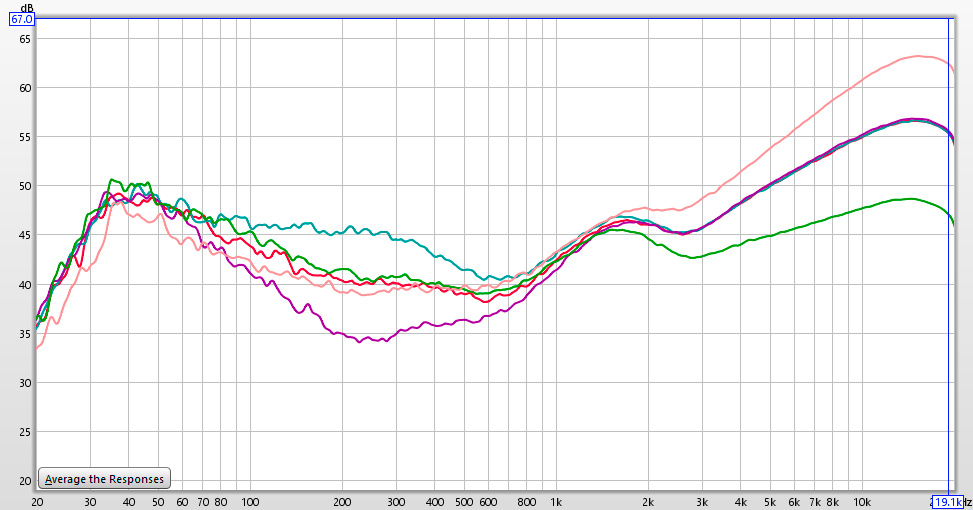
Here you can see the extremes of the EQ adjustment available. Choose up to 15dB variation in the treble tone, and 10dB to the mid-bass. Note that there are no sharp filters here that would help to hide cone breakup or other driver/baffle integration issues.
Living Room Setup:
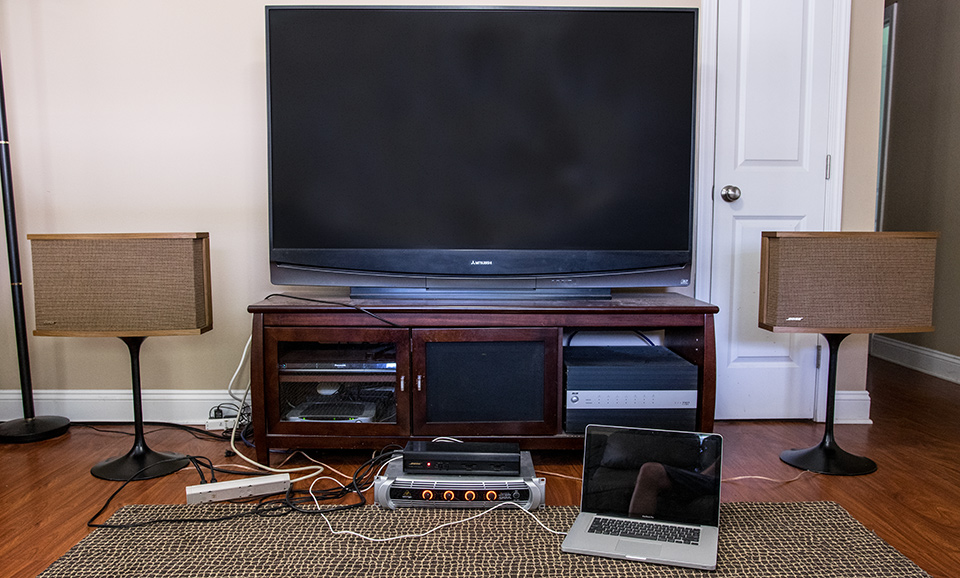
My lovely wife puts up with so much. I took over the living room and pushed my main speakers into the corner. This gave me room to set the 901's up with in the 12-18" distance from the back wall as the owner's manual recommends. I ended up at 16 inches from the rear wall and pushed them a bit wider than my main speakers to give them as much room as possible to operate. Now in a perfect world these would have an uninterrupted wall behind them and closer to corners, but I don't have that option so the right channel is stuck on the hallway side.
One thing to note is that the setup recommendations have changed over the years. Originally the 901's were to be setup mostly at ear level when seated. The setup for the past 30 years has been tied to these short stands, or hung from the ceiling far off axis. There is even a recommendation for matching pairs of floor and ceiling 901's in some manuals, something I'm sure a few die hards have tried.
As for electronics I left all my gear for my main system untouched and opted to use a Macbook as the source and my trusty iNuke NU6000 amp to supply whatever power was needed.
Listening Notes:
I've heard these speakers many times of the past 20 years, in lots of different setups and they are still kind of hard to describe because they are so different from anything else out there.
I'll break it down the performance of the speaker into a few standard categories and how they perform in comparison to other options out there.
Room interaction: These speaker couple to a room like no other, they immediately do something that will usually take weeks of dicking around with placement using traditional speakers. After initial placement I never once felt like I needed to move the speakers to get more out of them.
Imaging: The "Stereo everywhere" tag line that is used to sell these speakers is not quite the case. Imaging is huge and involved, but it is hard at least in my setup to place or pick out specific elements of the music.
There is no denying the 901's ability to make you hear all of the music, but because the image is such a blur I don't seem to notice it as much as directional speakers, it instead you get the feeling of it.
In contrast, Linkwitz dipole speakers create a soup of sound spread around the room, where the 901's transform the walls into massive speakers.
Headroom:
These are some of the loudest speakers I've used in the 200Hz-10kHz range. Setup outside I was able to blast 112dB of non distorted music out of the back of the speakers measured from 10 feet away.
The front was limited to about 98dB, which is still pretty damn loud for outdoors. I can see why there is a version of these speakers for PA use.
When you start to get above 95dB the bass response falls off as the little drivers can't play deep bass at high volumes.
This can also lead to them falling apart before 95dB on complicated tracks that are also bass heavy. For instance most Chemical brothers tracks are limited to about 85dB just because the full range drivers just can't do everything at once.
Tonality: The 901's are passable tonally if you are not in the room with them. If you sit and listen critically you will be met with harsh treble and bloated bass.
Adjusting the EQ to fix these problems will leave the speakers sounding dull as it turns down all of the treble when the worst problems in the cone breakup range above 5k.
Bass response is harder to nail down, it's hard to get away from the muddy bass, and honestly the Bass EQ options seem limited to either bloated bass or no bass.
Applications:
Some simple instrumental tracks sound good, but anything with female vocals or cymbals should be avoided. These speakers can be used in a party scenario, and will impress most drunk people with the quantity of sound they produce.
Measurements:
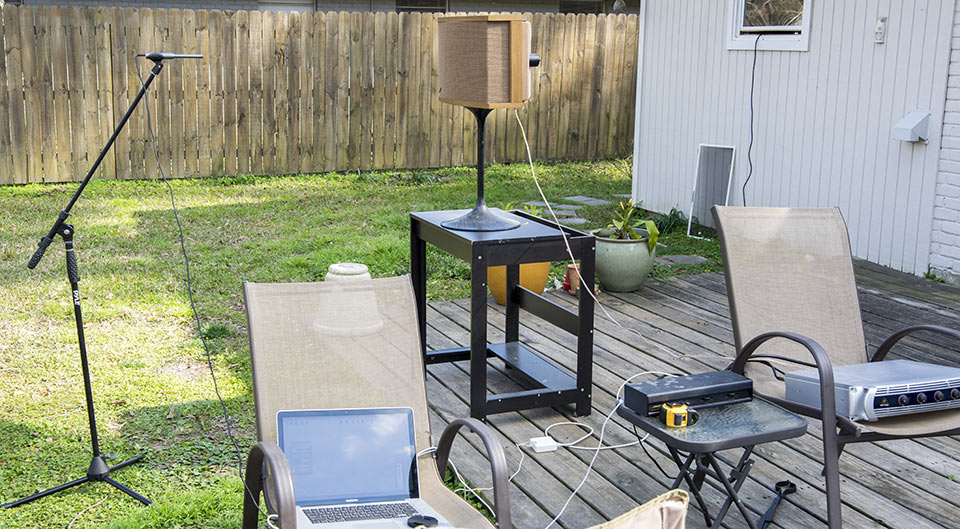
Due to the strange dispersion pattern outside measuring was a requirement for these speakers. My neighbors had to deal with 95dB sine sweeps for 3 hours straight, and then pink noise for another hour. I think you will find the results are totally worth it though.
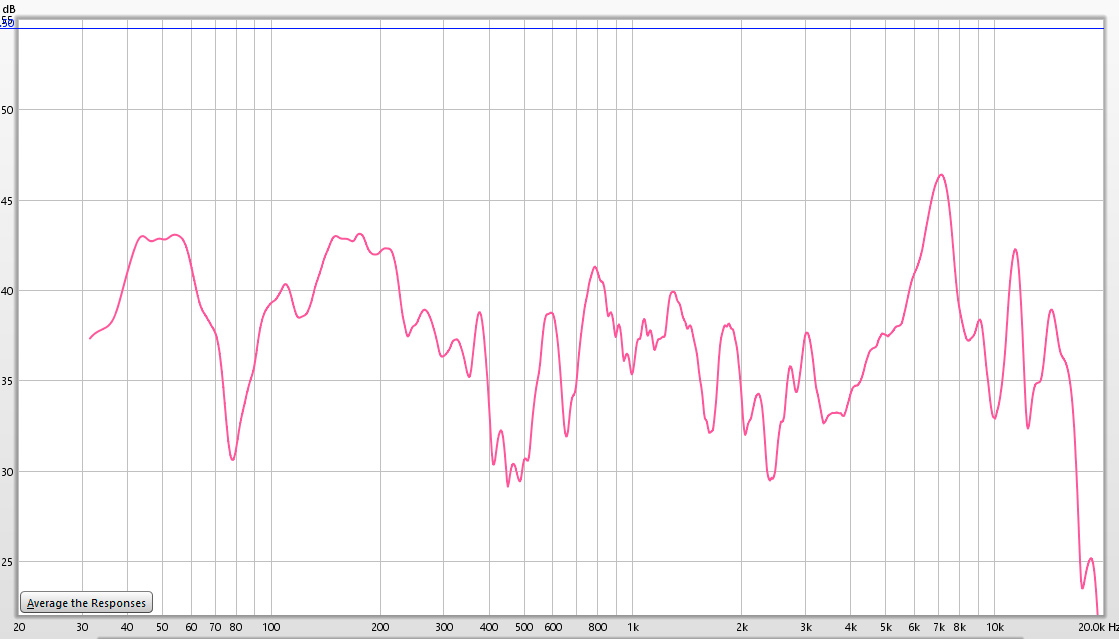
This is on-axis, with the EQ in-line, but set to flat with the Bass EQ button not pressed. This the most quiet axis of the speaker, so it's not as important as other measurements, but this is definitely not a good start.
We are seeing bass response down into the 30's and a jagged sloping response to the treble and a massive 7kHz peak. The jagged response is probably due to baffle reflections, and comb filtering from the 9 drivers all doing the same thing.
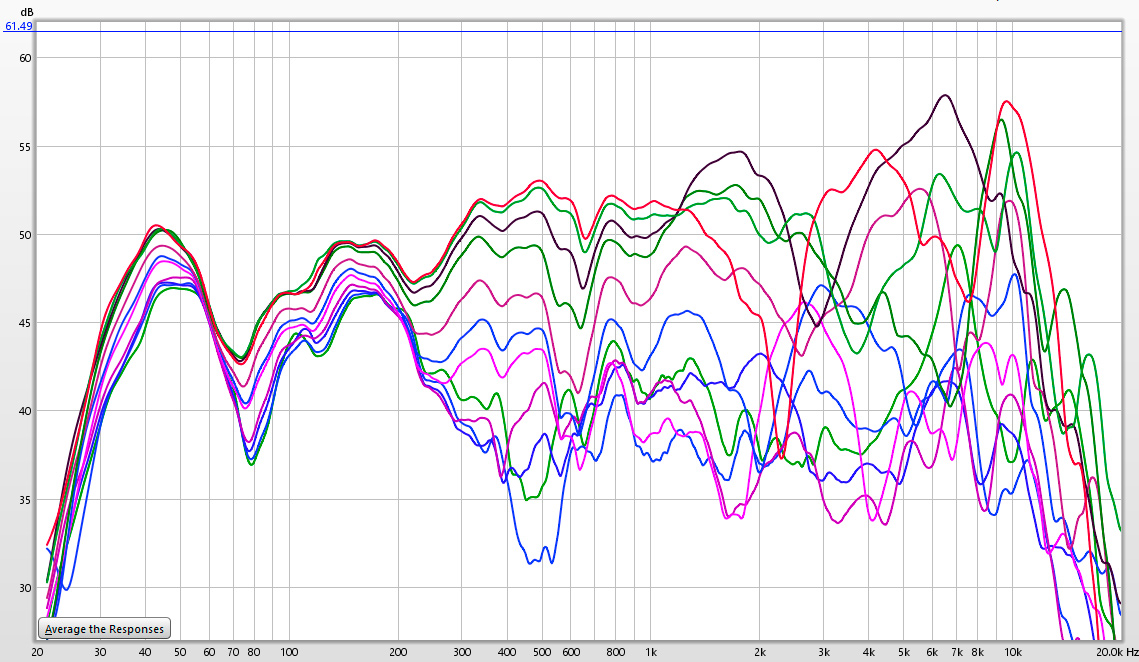
This took a good bit of work, here is a full 180 degree measurement done in 15 degree increments. It's damn near impossible to make out what is happening here, but generally the response gets much louder as you move around the back of the speaker.
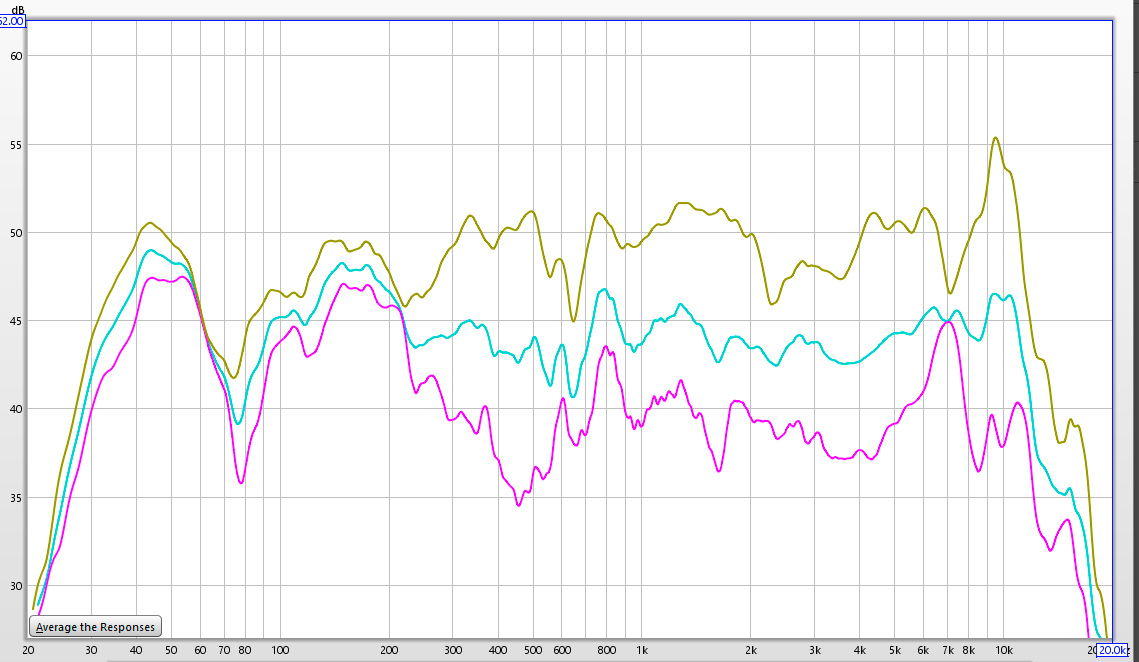
This is an averaging the above measurements into groups. On the bottom we have the front power response, this is an average of 0-60 degrees. On the top we are looking at the rear power response, an average from 120-180 degrees. Yes, the rear is about 10dB louder, than the front.
The one in the middle is the interesting one. It's an average of all of the off axis measurements, or the total power response of the speakers, and it's flat. We are talking +-2dB from 200Hz up to 12k.
Normally a power response would be tilted to show a roll off of the treble, but it's hard to say that it's wrong given the strange dispersion pattern. Maybe this was the intended goal of the speaker, or maybe it's just a coincidence.
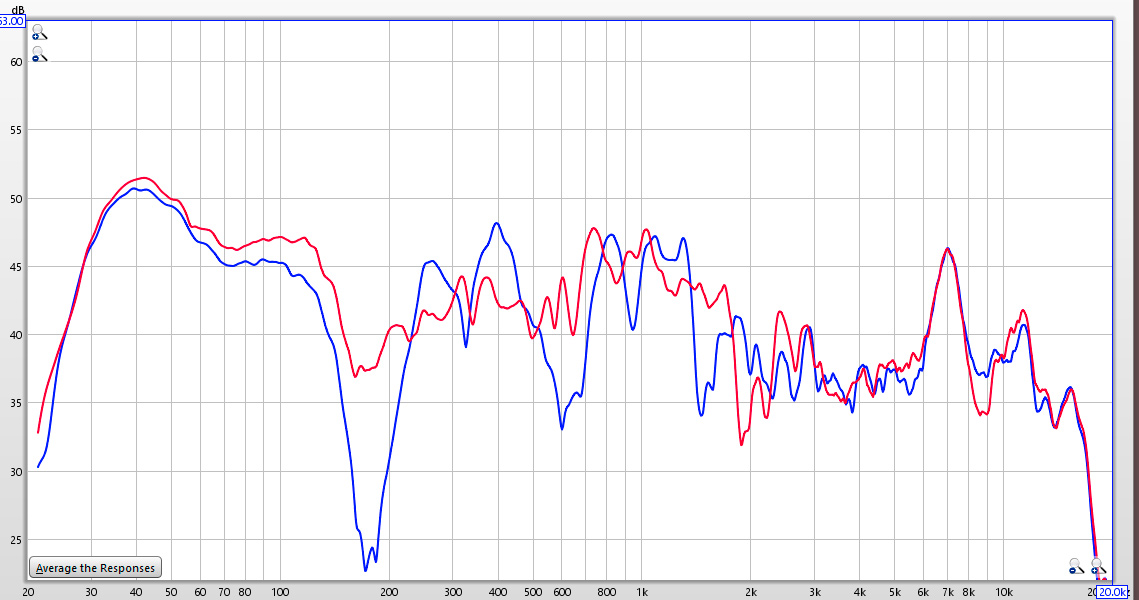
Here I put the speaker up against the back of my house showing floor and rear wall boundary interaction while still being outside with no side walls. This measurement was taken slightly above the axis of the speaker to better represent the suggested listening height. The red measurement is with the speaker 12 inches from the back wall, and the blue one is 18 inches. These are very similar, with the 12 inch being a little nicer. Also, note that the 7k peak is not hidden by the boundary, rear speaker interaction, or even being off axis vertically.
DSP Correction:
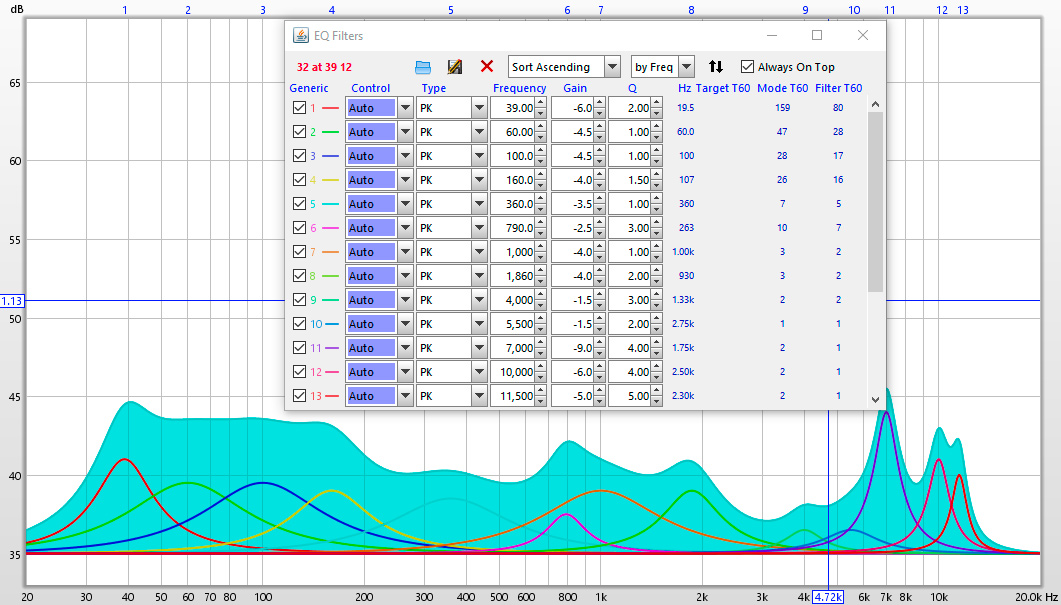
Initially I tried to keep it simple, but just removing the 7k peak ends up cutting too much treble, and the midrange is too high, then I ended up cutting the bass because it was too much, found another peak in the treble that was hidden by comb filtering. I continued on like this until, finally I ended up cutting everything a little. While it definitely sounds better, the correction is far from perfect due to the inherent irregularity of the speakers response.
Listening Notes:
Sounds better, keeps the massive image and other unique qualities of the speaker while removing most of the glaring issues.
Final Thoughts:
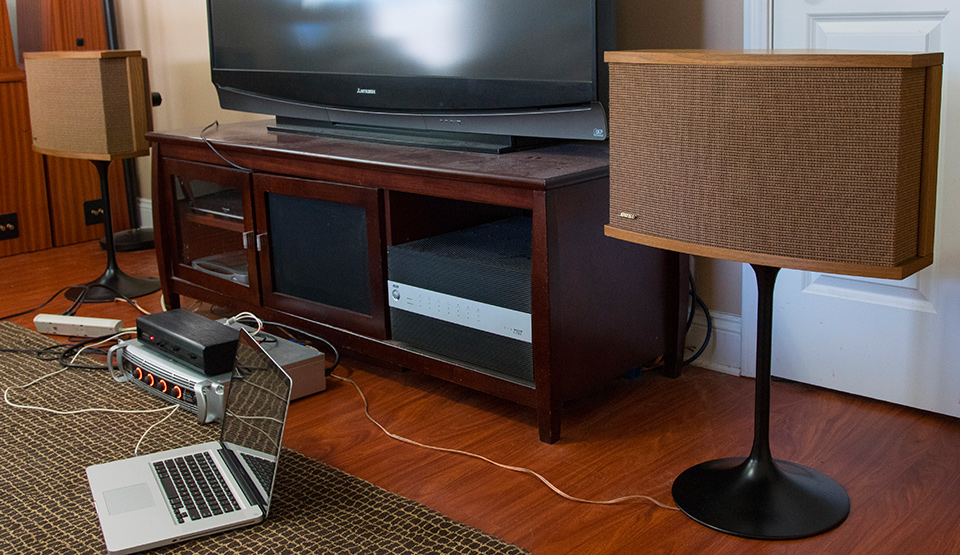
My favorite quote about the Bose 901 comes from Aleksandar Radisavljevic the designer of the RAAL ribbon:
"One of the people from the whole of audio industry that I admire the most is Amar Bose. He went through the trouble of designing excellent five inch whizzer-less full range drivers and stuffed 9 of them in a clever box,
with one shooting forward. That speaker, with it's dedicated EQ box, kicks ass big time in recreating the proper size of the orchestra and all that it contains."
The Bose 901 is a timeless middle finger to the rest of the industry. While it has plenty of flaws, I respect it's performance, blasting off faces and painting walls with sound in a way that no other speaker can.
If one was obsessed enough with these speakers and wanted to try and make improvements there are a few obvious ones that I can recommend. First priority is to get a subwoofer, crossing over to a sub as high as 90Hz can really clean up the sound of the speakers, and will give even more headroom. The second priority would be to add a dome tweeter to the speaker.
A stand alone enclosure that sits on top and crosses over to the 901's around 3k with something like a minidsp would fix all of the cone breakup and much of the comb filtering issues. Doing all of this should still leave most of the imaging tricks intact and while it does add considerable cost, there are worse things to do with your money.
Click here to buy the Bose 901 speaker system.
Check out the system finder to see what I recommend.
Other content you may like:
- Vanatoo Transparent One Review - Software update brings new standard of performance!
- Lone Star Audio Fest 2018 - Staying up late, drinking too much, smoking like chimneys!
- Andrew Jones goes back the be begining, ELAC B5.2 Debut 2.0 Review is up!
- New Scores for all reviewed speakers - Compare and sort for fun!
- Creative Sound Solutions DIY Solution for the high end - CSS Criton 1TD v2 review is up!
- Dayton Makes a Budget Desktop speaker with a crossover - Dayton Audio MK402 review is up!
- Smaller than small, deeper than deep - iLoud Micro Monitor review is up!
- Vanatoo's new speaker, The Transparent Zero review is up!
- SVS Prime Bookshelf Review is now available for your viewing pleasure
- ELAC A-Stock UB5 Listening Impressions are up!
- 30 years in the making, the ancient Bose 901 finally gets measured - The Bose 901 review is up!
- Lock and load, we are hitting the bottom of the barrel with both barrels - The Logitech z313 review is up!
- Bulletproof speakers... No, it's just the B&W 686 S2 Review!
- Declare independence from the British sound! - The KEF Q300 review is up!
- Recommended System Finder - Just in time for the Holidays!
- JBL LSR308 Studio Montor - Super Massive Epic Review!
- Two years after starting this site I finally get around to talking about my stereo.
- Small and cheap speakers transform into retarded and good... Micca COVO-S Review!
- AMT tweeter on a B652? The Dayton B652-AIR is reviewed for great justice!
- JBL LSR305 Studio Monitor Review!
- Zu Essence Review!

